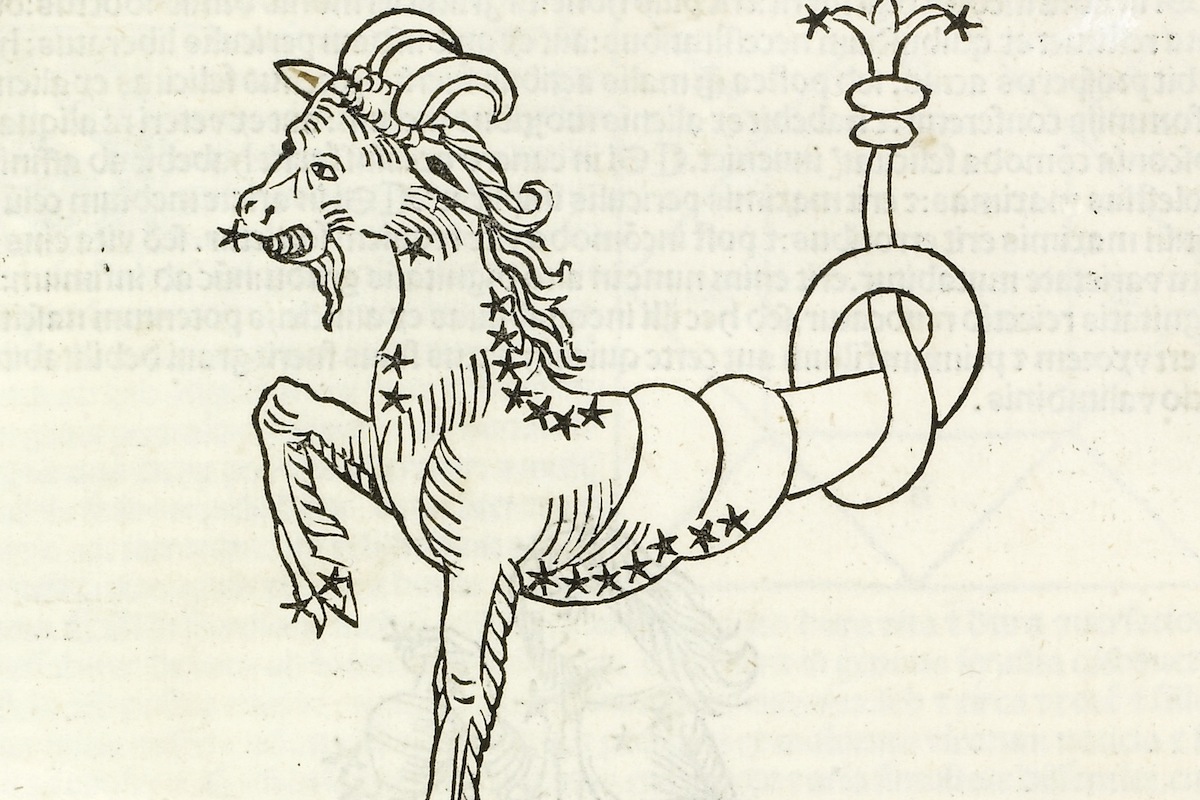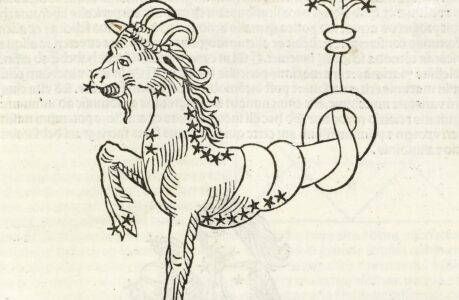The Capricornus constellation, also known as the sea-goat constellation, is one of the oldest known constellations. Its name comes from the Latin word “capricornus,” which means “horned goat.” Capricornus is one of the 12 zodiac constellations and can be seen in the southern hemisphere during the summer months.
If you’re in Ireland, you might think that viewing Capricornus is impossible due to the country’s northern location. However, with a little planning, you can still see this magnificent constellation. In this article, we’ll guide you on how to view Capricornus from Ireland.
When to View Capricornus Constellation from Ireland
Capricornus can be seen from Ireland during the summer months, from June to September. However, the best time to view the constellation is in August when it is at its highest point in the sky. During this time, Capricornus can be seen in the south-southeastern sky, just above the horizon.
Where to View Capricornus Constellation from Ireland
To view Capricornus from Ireland, you’ll need to find a dark and clear sky location. This means getting away from the city lights and light pollution. Some of the best places to view Capricornus from Ireland include:
- Wicklow Mountains National Park
- Ballycroy National Park
- Connemara National Park
- West Cork
- Kerry Dark Sky Reserve
When you arrive at your chosen location, give your eyes at least 20 minutes to adjust to the darkness. This will allow you to see more stars and make it easier to spot Capricornus.
How to Find Capricornus Constellation from Ireland
Capricornus is a fairly faint constellation, so you’ll need to look carefully to spot it. To find Capricornus, you’ll need to look for the bright star, Vega, which is part of the constellation Lyra. Once you’ve found Vega, look slightly to the right and down, and you’ll see a group of stars that resemble a triangle or a “V” shape. This is the top of the Capricornus constellation.
From there, follow the line of stars down and to the left, and you’ll see the rest of the sea-goat constellation. Capricornus is also known for its distinctive shape, which resembles a goat’s head and fish’s tail.
Capricornus is a beautiful and ancient constellation that is visible from Ireland during the summer months. With the right location, timing, and a little patience, you can experience the magic of this constellation. So, head out to a dark sky location in Ireland, let your eyes adjust, and gaze up at the sea-goat constellation. You’ll be amazed at what you see!
How can I see the constellation of Capricornus from Ireland?
To see the constellation of Capricornus from Ireland, you will need to wait until the summer months, from June to September, when it is visible in the south-southeastern sky. The best time to view Capricornus is in August when it is at its highest point in the sky.
To find Capricornus, you’ll need to look for the bright star Vega, which is part of the constellation Lyra. Once you’ve found Vega, look slightly to the right and down, and you’ll see a group of stars that resemble a triangle or a “V” shape. This is the top of the Capricornus constellation.
From there, follow the line of stars down and to the left, and you’ll see the rest of the sea-goat constellation. Capricornus is also known for its distinctive shape, which resembles a goat’s head and fish’s tail.
To get the best view of Capricornus, you’ll need to find a dark and clear sky location away from city lights and light pollution. Some of the best places to view Capricornus from Ireland include Wicklow Mountains National Park, Ballycroy National Park, Connemara National Park, West Cork, and Kerry Dark Sky Reserve.
Once you arrive at your chosen location, give your eyes at least 20 minutes to adjust to the darkness. This will allow you to see more stars and make it easier to spot Capricornus. With a little patience and the right location, you’ll be able to experience the magic of the Capricornus constellation.
The mythology of the constellation of Capricornus
The constellation of Capricornus has a rich and fascinating mythology that dates back to ancient times. In Greek mythology, Capricornus is often associated with the god Pan, who was known as the god of the wild, shepherds, and flocks.
According to one myth, Pan was pursued by the monster Typhon, a giant with a hundred dragon heads. In order to escape, Pan transformed himself into a half-goat, half-fish creature and dove into the river Nile. As a result, the constellation of Capricornus was created, symbolizing Pan’s transformation.
In another Greek myth, Capricornus is associated with the god Kronos, who was also known as Saturn in Roman mythology. Kronos was one of the Titans, a group of powerful gods who ruled the world before the Olympian gods. Kronos was warned by his mother, Gaia, that one of his children would eventually overthrow him. In order to prevent this from happening, Kronos swallowed all of his children, except for Zeus.
Zeus grew up to be a powerful god and eventually defeated Kronos, freeing his siblings from his father’s stomach. In honor of this event, Zeus placed Kronos among the stars as the constellation of Capricornus.
In Chinese mythology, the constellation of Capricornus is associated with the Water God, or the Black Tortoise, one of the four guardians of the sky. The Water God is often depicted as a dragon-headed tortoise, symbolizing longevity and good fortune.
In Hindu mythology, the constellation of Capricornus is associated with the god Shiva, who is often depicted as a half-man, half-animal figure. Shiva is known as the destroyer and is often associated with transformation and change, much like the transformation of Pan into the sea-goat.
Overall, the mythology of Capricornus is a rich and varied tapestry that spans many different cultures and traditions. It is a testament to the enduring power of the stars to inspire wonder and imagination in people throughout the ages.
The Stars in the constellation of Capricornus
The constellation of Capricornus contains several bright stars and many dimmer stars. Here are some of the notable stars in Capricornus, listed by their Bayer designation (a system for identifying stars by a combination of a Greek letter and the Latin name of their parent constellation):
- Alpha Capricorni (Algedi): Alpha Capricorni is a binary star system that consists of two stars that orbit each other every 700 years. The brighter star is a yellow giant, while the smaller companion is a yellow-white dwarf.
- Beta Capricorni (Dabih): Beta Capricorni is a triple star system that includes a bright white giant and two smaller companions.
- Delta Capricorni: Delta Capricorni is a binary star system that consists of two stars that orbit each other every 1.02 years. The brighter star is a yellow-white subgiant, while the smaller companion is a yellow-white dwarf.
- Gamma Capricorni: Gamma Capricorni is a binary star system that consists of two stars that orbit each other every 96 years. The brighter star is a yellow-white giant, while the smaller companion is a white dwarf.
- Zeta Capricorni: Zeta Capricorni is a binary star system that consists of two stars that orbit each other every 10.6 years. The brighter star is a blue-white subgiant, while the smaller companion is a blue-white dwarf.
- Epsilon Capricorni: Epsilon Capricorni is a binary star system that consists of two stars that orbit each other every 472 years. The brighter star is a blue-white giant, while the smaller companion is a blue-white dwarf.
In addition to these bright stars, the constellation of Capricornus also contains many dimmer stars that can be seen with binoculars or a telescope.
Deep sky objects visible in the Constellation of Capricornus
The constellation of Capricornus contains several interesting deep-sky objects that are visible with a telescope. Here are some of the notable deep-sky objects in Capricornus:
Messier 30 is a globular cluster that contains hundreds of thousands of stars. It is located about 28,000 light-years from Earth and is one of the oldest known globular clusters.
NGC 6907 is a spiral galaxy that is located about 25 million light-years from Earth. It has a bright nucleus and faint arms that are difficult to see.
Barnard 30 is a dark nebula that is located near the star Epsilon Capricorni. It is a cloud of dust and gas that obscures the light of stars behind it.
NGC 7048 is a planetary nebula that is located about 5,000 light-years from Earth. It was formed when a star similar in size to the Sun ran out of fuel and expelled its outer layers.
IC 4765 is an open cluster that contains about 20 stars. It is located about 1,000 light-years from Earth and is visible with a small telescope.
NGC 6960 is a part of the Veil Nebula, a supernova remnant that is located about 1,400 light-years from Earth. It is a cloud of gas and dust that was formed when a massive star exploded.
Overall, the constellation of Capricornus offers a variety of interesting deep-sky objects for stargazers and astronomers to observe and explore. With the right equipment and conditions, these objects can be seen and appreciated for their beauty and scientific significance.

